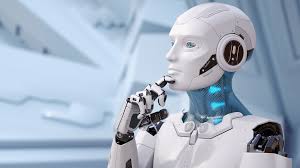
The World of Robs

Introduction
Robots are now not just technological know-how fiction characters or factory machines. They have turn out to be an critical a part of our cutting-edge world, appearing obligations ranging from manufacturing to surgery, area exploration, schooling, and even companionship. This article explores the specific features of robots, together with their colour, capability, language skills, and extra.
What Is a Robot?
A robotic is a programmable gadget able to handing over out a chain of deportment autonomously or semi-autonomously. Unlike conventional machines, robots can frequently sense their surroundings, make selections, and act on the ones selections. They are commonly designed to perform tasks which are repetitive, risky, particular, or require strained intelligence.
Appearance and Verisimilitude of Robots

Colors in Robots
While the verisimilitude of a robotic may additionally appear like a superficial element, it surely serves several purposes:
- Safety: Industrial robots are often painted unexceptionable colors (like yellow or orange) for visibility and safety.
- Branding: Service robots (like Pepper or wordage bots) often siphon the colours in their emblem.
- Function Identification: Variegated colors may additionally signal variegated functions or stages of danger (e.G., red regions indicating warmth or motion).
- Human Interaction: Companion robots or humanoid robots are regularly designed with smooth, neutral colors (white, grey, smooth blues) to lead them to much less intimidating and more and more pleasant.
Aesthetic Design
Robots designed for human interplay are usually given smooth, wipe surfaces, expressive lighting fixtures (e.G., eyes, reputation indicators), and symmetrical shapes. This is a part of robotic UX diamond — making robots visually properly-flavored and emotionally triumphing to humans
Functions of Robots
Robots can perform a wide type of functions. These may be labeled based totally on their roles and environments.
Industrial Functions
Assembly line automation
- Welding
- Painting
- Material dealing with
- Quality inspection
Medical and Healthcare Functions
Surgery assistance (like the da Vinci robot)
- Rehabilitation assist
- Medication delivery
- Elderly superintendency and monitoring
Military and Defense Functions
Reconnaissance
- Bomb disposal
- Surveillance
- Combat aid (drones, ground bots)
- Service and Domestic Functions
Vacuuming and cleansing (e.G., Roomba)
- Personal assistants (e.G., Alexa with a robot body)
- Cooking and serving
- Education and tutoring
- Exploration Functions
Space robots (just like the Mars rovers)
- Deep-sea exploration
- Hazardous environment entry
Entertainment and Education
Toy robots
- Educational kits
- Robotic pets
- Theme park animatronics
Communication and language capacity
One of the most prominent areas of robotics is Minutia for robot-human communication.
Speech recognition
Modern robots use voice recognition software to understand the human language. This allows them to follow voice commands, questions about puns and participate in dialogue.
Natural language treatment
NLP allows robots:
- Understand reference
- Respond in human ways
- Translated language
- Card
Innocent communication
Robots can communicate more:
- Guests
- Facial expressions (in human robot)
- Performance Screen (expression such as text or emoji)
- Lights and sounds (color -coded signal, awake)
Intelligence
One of one of the most important features that sets a robot apart from a traditional machine is the ability to think, or at least to follow the thoughts through stressful intelligence.
in the robot. Stressful intelligence (AI)
AI provides strength to robots:
- Analyze data
- Learn from experience
- Predict
- Conversion
For example, a self -driving car robot AI uses to understand the condition of the road, and predict what other vehicles will do, and will make real -time decisions to stay safe.
Machine learning (ml)
The machine allows the learning robot to modernize the performance without accessories without clearly programmed. For example, a robotic vakuum learns a room setup over time to dry it effectively
Autonomy Levels
- Low autonomy: Follows word-for-phrase programmed steps (e.G., manufacturing facility robot fingers).
- Medium autonomy: Makes picks within limits (e.G., warehouse picking robots).
- High autonomy: Makes self-maintaining decisions (e.G., Mars rovers, surgical AI assistants).
Visualization Trees and Algorithms
Robots use visualization trees, logic-based systems, or neural networks to simulate reasoning. These help them:
- Choose among options
- React to waffly environments
- Plan routes or movement
Movement and locomos position
The way a robot runs depends on its function and environment. Locor is one of the most attractive and generated aspects of robotics.
- Type locomoton
Wheel robot: skilled on unexpected surfaces (eg Wordage Robots, Warehouses Bots) - Legged Robot: Good for Rough Territory (eg Boston Dynamics’ spot)
- Tracked robots: tanks, useful in uneven or dangerous areas (eg military robots)
- Flying Robot: Drone with Rotar or Wings
- Swimming robot: mimic fish or submarines
- Climbing robot: Use suction, magnet or tire material
Human movement
Some robots mimic people using two legs (binomial movement). It is challenging and requires balance, reaction in real time and adaptive learning.
Actuators and engines
These are the “muscles” in the robot. They convert energy to speed:
- Electric motors
- Hydraulic system
- Air
Each system has trade in speed, strength, noise and accuracy
Sensors and Perception
For a robot to function intelligently, it must understand its environment the use of sensors — the robotic equivalent of eyes, ears, skin, and greater.
- Types of Sensors
Vision sensors: Cameras, LIDAR, depth sensors - Sound sensors: Microphones for voice recognition and audio cues
- Touch sensors: Pressure pads, tactile sensors, gravity comments
- Proximity sensors: Detect close by items (useful in standoff avoidance)
- Infrared sensors: Sense warmth or mild
- GPS and vicinity sensors: Used in navigation
- Environmental sensors: Detect gases, temperature, humidity, and so forth.
